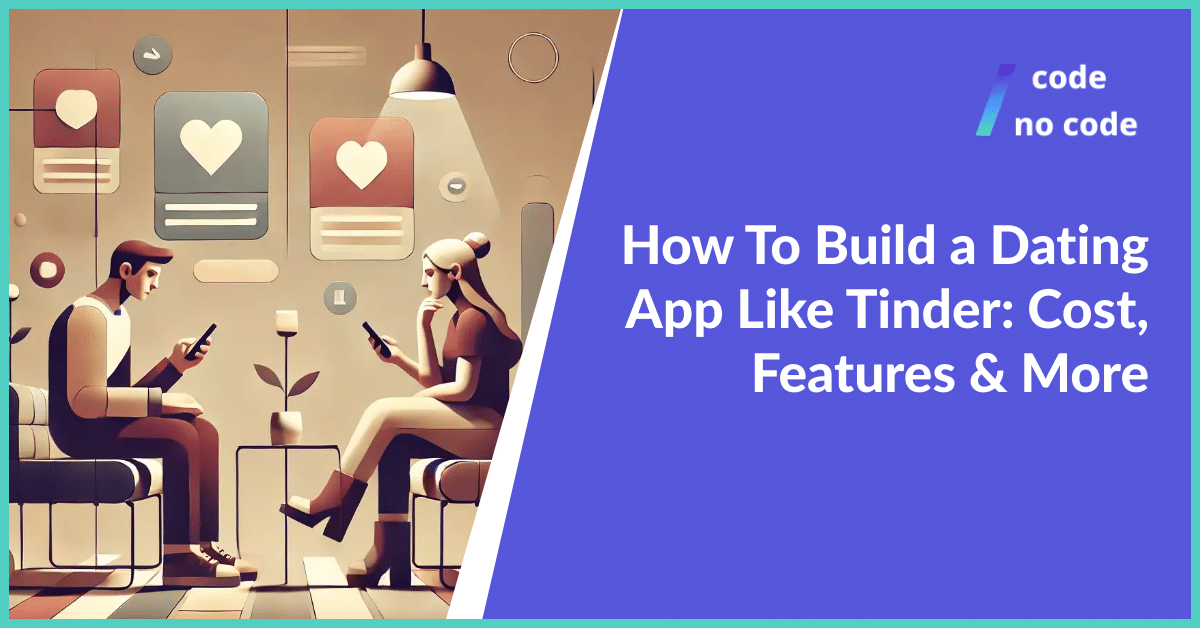
Top 10 Best Outsourced Product Development Companies
The year is 2024. Outsourcing, once the boogeyman of corporate development horror stories (“They took our jobs!”) has now become a badge of honor—a cunning strategy adopted...
Building your own dating app like Tinder may seem complex, but it’s achievable. This step-by-step guide will walk you through key features, development costs, and more. By the end, you’ll know exactly how to build a dating app like Tinder.

Tinder has been on the dating app market for quite some time now and has managed not to be left behind. It is one of the most successful dating apps out there, and the success can be attributed to many reasons, but there are the top 5 reasons why it is the best dating app out there:
Simplicity and Gamification: the swipe feature is quick and intuitive, offering a fast, addictive experience similar to mobile games. The risk-free users “match” system reduces rejection anxiety, making it more approachable.
Mobile-First and Geolocation: Designed for mobile use, Tinder uses geolocation to connect users nearby, improving the chances of real-world interactions and making dating more accessible on the go.
Cultural Fit and Youth Appeal: Launched as casual dating became more accepted, Tinder appealed to millennials and Gen Z with its visually-driven, low-commitment style.
Large User Base and Freemium Model: Network effects → more users leading to more matches → boost engagement. The freemium model ensures accessibility while generating revenue through premium features.
Effective Marketing and Innovation: Viral growth, college partnerships, and continuous feature updates (like Super Likes, Boost, and Passport) keep users engaged and attract new ones.
To build an app like Tinder, the following key features would be necessary:
User Registration & Login:
Profile Creation & Management:
Location-based Matching:
In-app Messaging:
Premium Subscription:
User Verification:
Reporting and Blocking:
Settings & Preferences:
Admin Analytics Dashboard:
Standout features:
When creating a dating app, it’s essential to choose a niche or target audience. This will help you tailor your app to meet the specific needs and preferences of your users. Some popular niches for dating apps include:
Building an app like Tinder can be an exciting experience, but it’s important to understand the costs involved. Here’s a detailed breakdown, created by an AI software cost estimator, to help you understand the estimated budget, timeline, and key considerations.
Estimated cost: $51,000 – $55,000
Now consider that this is the cost of developing an app like Tinder if it were developed using no-code tools and only had the essential features from the list above.
The cost of developing a Tinder-like dating app falls into this range. The price covers the entire development process, from initial design and analysis to deployment on both iOS and Android platforms.
The price range takes into account several factors, including
A 20% buffer is also included to cover unexpected challenges, such as scalability issues or compliance with international regulations.
You can read the full estimate report and the pricing explained here.
Based on the AI software cost estimator, we also know that it would take about 16-18 weeks to build an app similar to Tinder without advanced features.
This timeline includes:
This total duration covers all necessary stages, from design through deployment, to ensure a complete and functional app on both iOS and Android platforms.
To make a successful dating app there are a lot of factors that can influence the cost of developing a dating app such as
Here’s a breakdown of how you can monetize your dating app, taking inspiration from Tinder’s successful strategies:
There are lots of simple ways to make money from such an app. You could even come up with a more creative monetization strategy. It just takes a little thought.
Building an online dating app like Tinder is pretty complex. It takes a lot of technical know-how and expertise to get it right. The idea behind it is pretty simple, but there’s a lot to think about when you’re actually building it.
Building a dating app like Tinder takes a lot of planning and resources. To create an app with similar success, you need to include key features such as user registration, geolocation-based matching, and in-app messaging. Each feature impacts the user experience and affects dating app cost.
Development costs for a Tinder-like app typically range from $51,000 to $55,000. This budget includes essential features, multi-platform compatibility, and basic security.
Monetizing your dating app can be achieved through several proven strategies. A freemium model allows free access to basic features, while premium upgrades can improve the user experience. In-app purchases, such as boosts or super likes, generate additional revenue and provide value to engaged users.